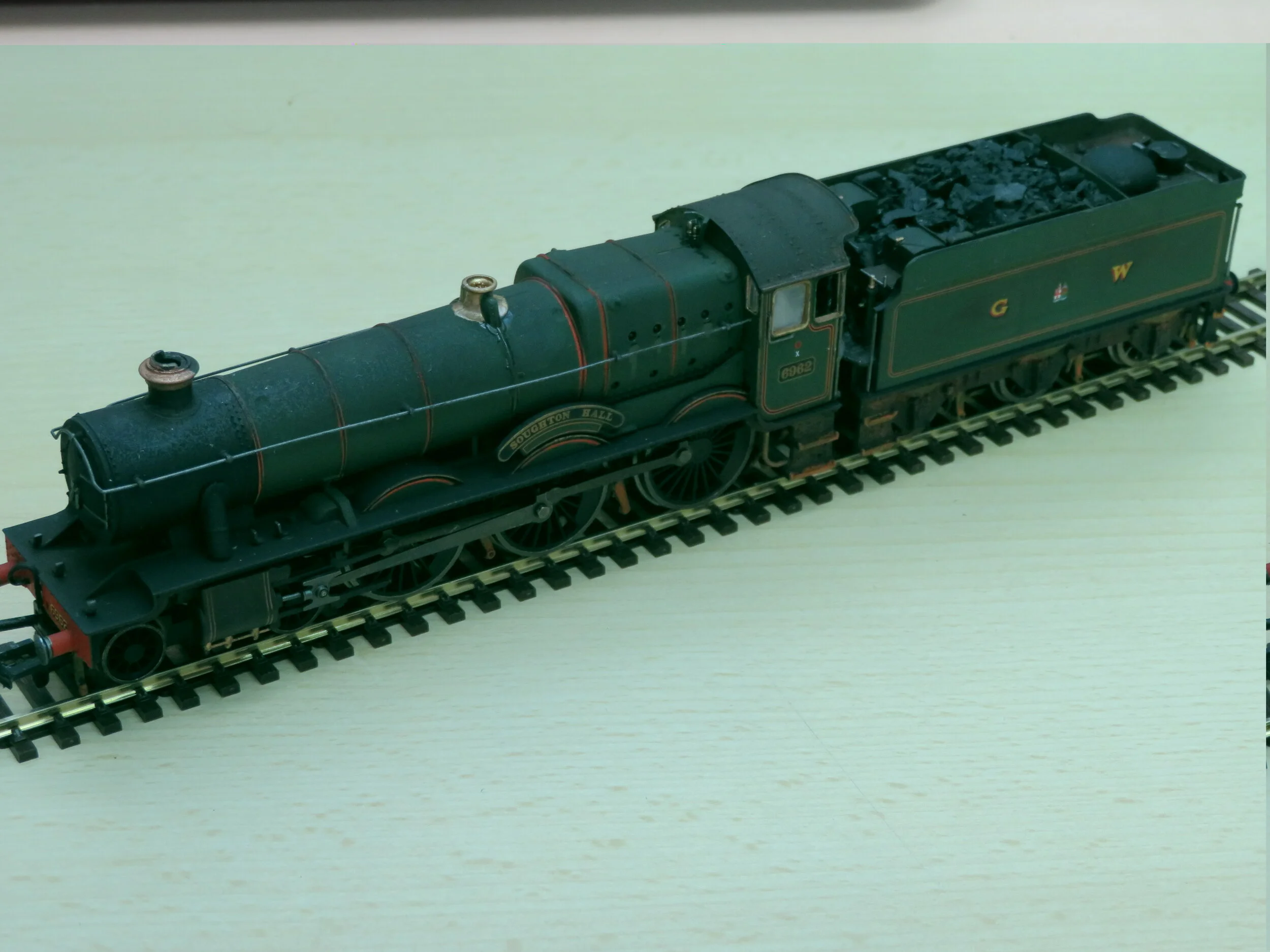Writen by Ian Stevenson.
Like all in the Swansea Railway Modellers Group, we are all having to suffer for the greater good! For most of us this is a chance to catch up on our modelling projects that have been pushed to the back of the cupboard in favour of more important “domestic” tasks!
At last we can get back to some model making and re-finishing of all those loco models and rolling stock that were “almost finished” I have been into my box of ‘‘kits that I must build sometime’’.
The 00 gauge Gun Powder van opposite is a lovely 'Dapol' model I purchased from a club stock sale. It was all too clean with a bright white roof, so it has been painted and weathered into an "in service" condition. A light coating of dust & rust has transformed it ready for service on the "Crawlas Junction Railway". The Dapol mouldings are so clean and it has very nice 3 hole wheel sets which run very smoothly and look so much better with their white wall wartime finish.
Here are my Ratio 4 wheel coaches from old kits purchased at the stock sale. They are G.W.R. early 1900’s stock, hand painted, (the panelling was a nightmare!) Self-adhesive gilt lining, cut from greeting card kits from The Range, was applied Then satin varnished. The trailing wagon is a fine kit from Parkside Dundas P.C.84 10 Ton “Mink” built in 1907 condition with attractive sliding louvered shutters at each end. Almost finished as I am still waiting for the G.W. 25” white lettering to arrive from Press Fix.
A selection of some of my 00 gauge Great Western locos are displayed on my lineside diorama scene:
“Dean” Goods 2309 is an Oxford Diecast model, renumbered and now running smoothly, chipped for DCC. By M.I.B. Models, (thanks Alan), with many added details and some weathering, crew, coal & lamps. “Earl” class 3214 is a Bachmann model which has been chipped for DCC. The addition of crew, fire irons, real coal and a dose of weathering using Carrs powders and careful painting, has provided a smooth running period loco from the beginning of the 20Th. C. 2310 has also been finished to the same standard and they look good running in consist together! Finally, “Southton Hall” an older Bachmann loco that had been repaired and that I purchased from the club sale for £25-00. She has had her back head detailed & painted, a brass fall plate added, crew and real coal which has spilled down into the tender rear area round the water dome. (Typical sloppy G.W. behaviour !).
The painting & weathering I believe brings my locos into a proper working condition and it is such fun to do. I started by making a brass fall plate from scrap sheet then I file a checker plate diagonal pattern before super glue fitting it. The back head, which had moulded detail in place, I then painted in copper & brass paint with metallic polished iron lever details and white dials and a red regulator lever. The floor was painted to represent dirty steel plating to match the fall plate and tender front area. The 2 tool boxes, moulded in black plastic, were re-painted in G.W.R. green with brass catches and hinges picked out. Real coal, suitably crushed up, was then added using a 50/50 white glue/water mix with a drop of liquid soap added then dribbled over the coal. I use brass wound guitar strings for the representation of the vacuum hoses. Lamp irons are simply heavy duty staples bent & trimmed. Crew figures are mainly Bachmann or second hand from the show. I spray them matt black then apply the skin colour mix of light rust matt 85 & pale stone applied with a 000 brush. Eyes, moustaches, side burns & beards are done with a 01 permanent black pen or a very steady brush hand! Fire irons always look good on your tenders and are easy to make from fine brass wire suitably shaped & bent with a shovel head from a small scrap brass sheet super glued on then painted.
Great Western locos, were often dirty smelly things and not the smooth shiny examples that arrive out of the Bachmann box! I re-finish the main body with a quick pass of Windsor & Newton Professional matt varnish. This is followed by a dusting of black, light grey & rust colour weathering powders. I apply this using a dry brush technique having dropped the powders onto the tacky varnish. Try it!
The 00 gauge yard crane "SAMSON II" below is a 40 year old crane from Hornby (I think) that actually works that I have had on one side for all that time! I have given it a detailing make over, added granite stonework to the plinth, handrails, new chain jib rigging, driver, boiler, funnel and a canopy made from part of a Ratio station canopy kit. The sign is computer generated and the crane has had the white metal castings cleaned up then painted & weathered.
Do Have fun, give some of these ideas a try, keep busy and stay well with your models.
Kind regards, Ian








